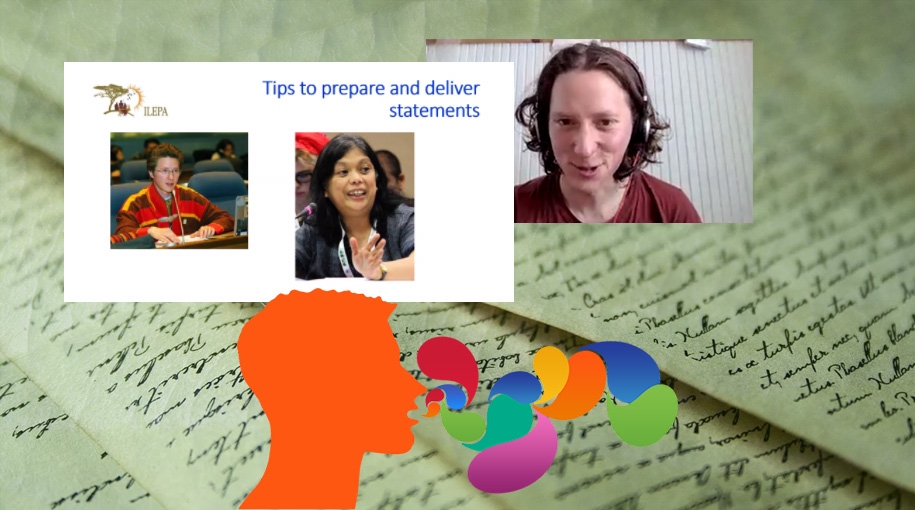Mr Aslak Holmberg, Vice President of the Saami Council representing the Finnish Sámi Central Organization and one of the trainers in the on-going training on policy advocacy in the UN Convention on Biological Diversity processes, shared several tips pertaining to proper delivery of any statement during UN CBD meetings:
During the preparation, first, one must familiarize himself or herself with the documents of the certain item on the table. Second, he or she should identify the issues that are relevant to indigenous peoples and local communities (IPLCs). Third, he or she must consider actual texts that require improvement in relation to the issues of IPLCs. Next, he or she must point out the negative impacts of the texts to IPLCs and consider the kinds of safeguards that could address these.
In reading the statement or intervention, Aslak stressed the need to be brief in the introduction. The speaker must thank the meeting chair and mention who or which organization he or she is representing. Then, he or she must provide a brief overview of the item including the general thoughts about it of the organization he or she is representing. After that, the speaker must address any concerns and mention improvements that the organization represented would like to see. Aslak also pointed out that when there is a long text recommendation that cannot be delivered during one’s allotted speaking time, the person on behalf of the organization can still deliver the additional text recommendations in writing.
Involved with the International Indigenous Forum on Biodiversity (IIFB), Aslak stressed additional key points to remember when delivering a statement: capture the listener, familiarize oneself with the texts to avoid being stuck with some strange words, and know the meaning behind the texts. The speaker must not read so fast and should enunciate his or her words clearly. He or she should look at the camera, enabling some kind of contact with the audience and sounding like he or she is telling his or her issues. The speaker must pay attention to intonation, as well, attempting not to be monotonic, practicing reading out loud in advance, and sticking to the allotted speaking time. If time is not enough, the speaker must not leave the most important point for last. Towards the end of the delivery, the speaker should add words, like finally, to grab the attention of the listeners. Then, the speaker ends his or her intervention by thanking the chair for giving him or her the floor.
Ms Joji Cariño, one of the indigenous experts engaging in the UN CBD processes who is also among the roster of trainers, offered additional pointers as regards crafting interventions. One is for advocates to bring in fresh words and ideas to the IIFB for further discussion. She added that those new to the process must not be intimidated by the others who may already have lengthy experience of doing advocacy work at the said level. More so, new comers must volunteer to be part of certain teams or working groups who are preparing these statements. Likewise, the new advocates can further advance the cause by citing relevant examples from their communities.
The on-going training is being implemented jointly by the ELATIA Indigenous Peoples Training Institute and ILEPA with support from Nia Tero and Bread for the World.


